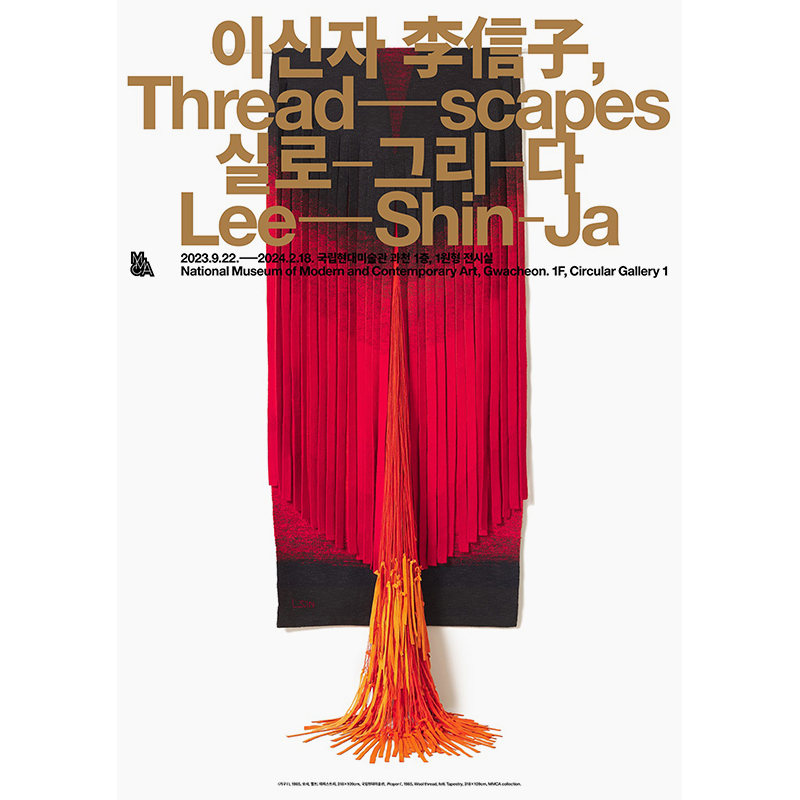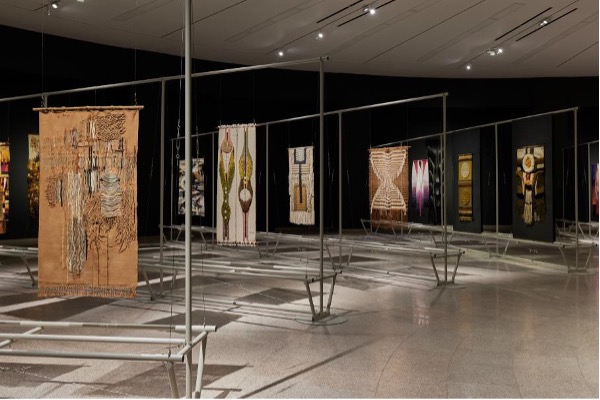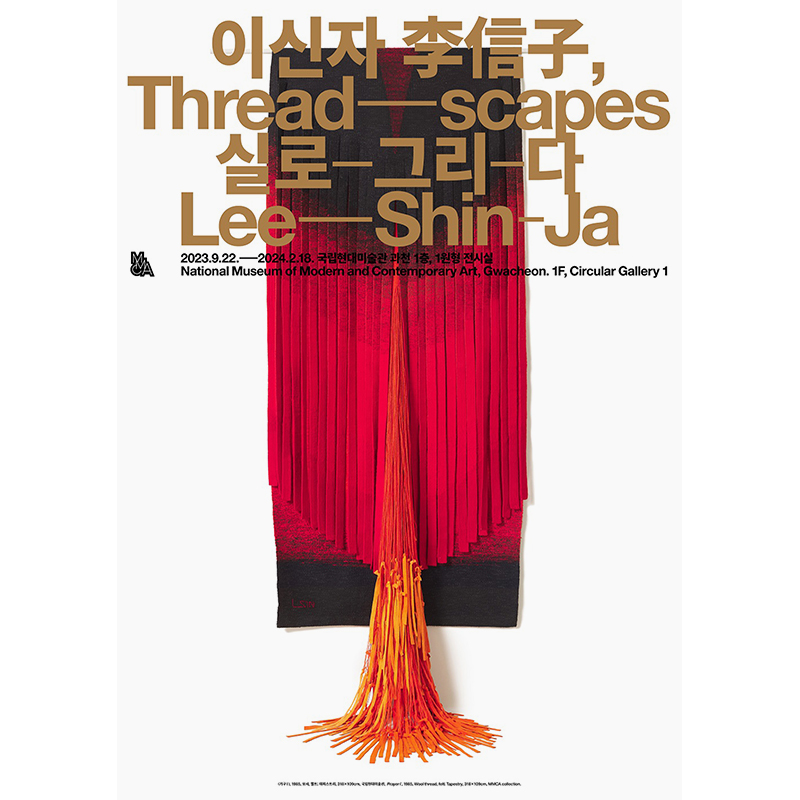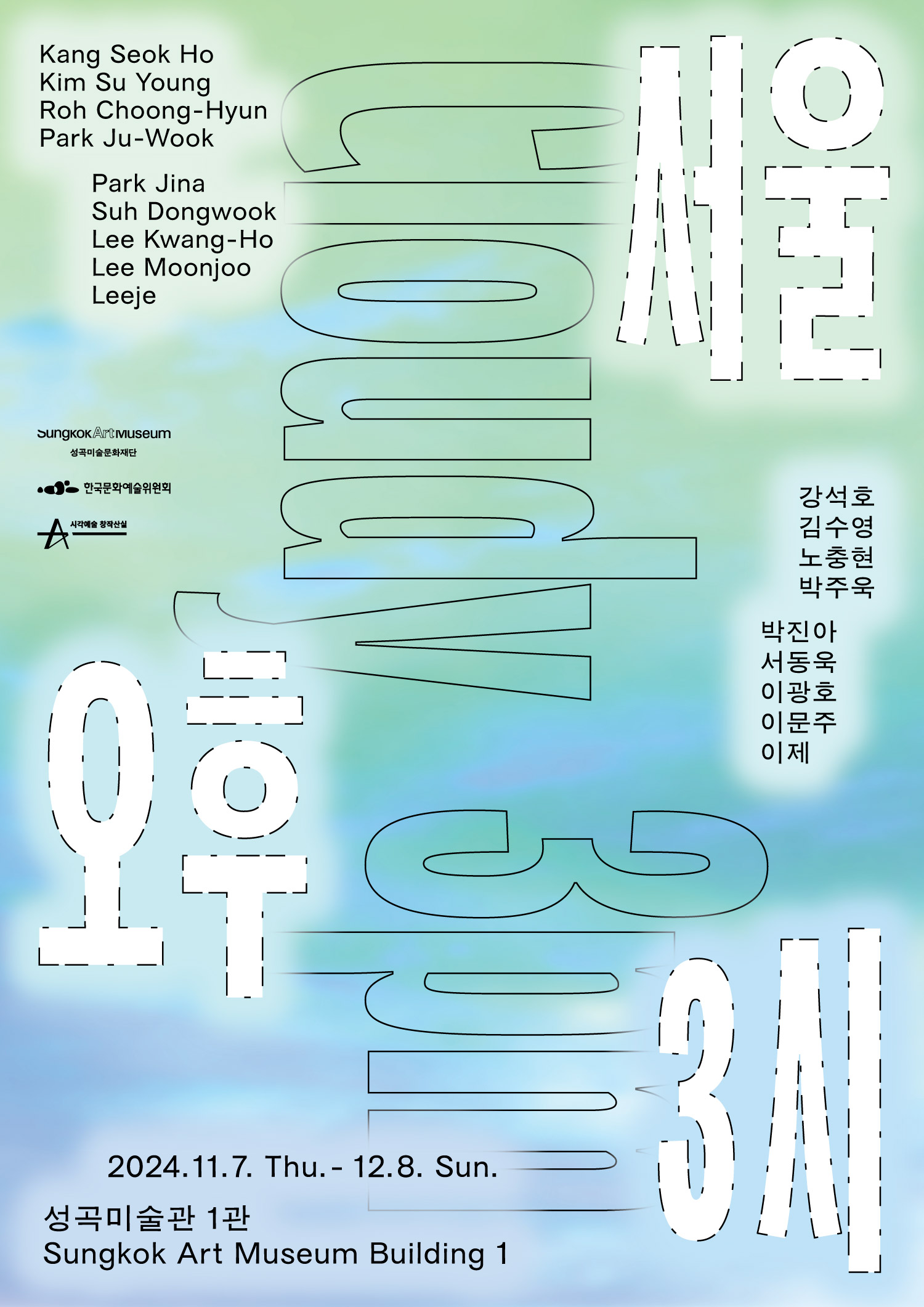Future research into the relationship between Lee ShinJa’s pioneering artistic legacy and contemporary art in South Korea will likely reveal a unique art history of fiber art that can only be found within the Korean art scene.
 Poster image of “Lee ShinJa- Threadscapes,” MMCA Gwacheon. Image courtesy of MMCA.
Poster image of “Lee ShinJa- Threadscapes,” MMCA Gwacheon. Image courtesy of MMCA.Unearthing hidden truths is always fascinating, and in the realm of art history, shedding light on previously overshadowed facts can broaden our understanding of artistic landscapes. For this reason, the recent global art world has pivoted from focusing solely on predominantly Western mainstream artists to celebrating the creative expressions of diverse cultures, gender identities, and artists who engage in innovative experimentation.
In 2022, this shift toward diversifying the global art narrative was evident in various biennales. For instance, the Venice Biennale’s main exhibition, The Milk of Dreams, highlighted the works of surrealist female masters, contemporary female artists, and non-binary artists. The United States represented artist Simone Leigh at the Venice Biennale as the first African-American woman to lead the U.S. Pavilion. Meanwhile, the German documenta appointed the Indonesian-based art collective ruangrupa as the artistic director.
This emphasis on diversity resonated throughout the year’s art fairs. Women artists, in particular, received heightened recognition on the global stage. At Frieze Seoul in September, artist Hannah Woo was honored as the inaugural recipient of the Frieze Seoul Artist Award. Frieze Masters, which recently concluded, featured a section dedicated to the works of modern female masters who have been underrepresented in art history. Additionally, during the same period, a satellite art fair was held, which exclusively showcased artworks by women artists.
 Exhibition view of “Lee ShinJa- Threadscapes,” MMCA Gwacheon. Image courtesy of MMCA.
Exhibition view of “Lee ShinJa- Threadscapes,” MMCA Gwacheon. Image courtesy of MMCA.While Korea might not boast the same level of ethnic and cultural diversity as certain countries, its art community has been engaged in the task of unearthing art that has been buried in its history.
Over the years, experimental artists previously overshadowed by Dansaekhwa (Korean monochrome painting) and Minjung art (South Korean socio-political art) movements have gained recognition. Additionally, as the global art scene shifts, Korean women artists—historically sidelined in a male-dominated scene—are now receiving the acknowledgment they deserve.
Currently, the National Museum of Modern and Contemporary Art (MMCA) in Gwacheon is spotlighting the artistic world of Lee ShinJa, the first in Korea to introduce fiber art to the Korean contemporary art scene. The Lee ShinJa: Threadscapes exhibition spans Lee’s early works from the 1950s to her most recent creations in the 2000s, encompassing over 30 pieces, including drawings and photographs, arranged chronologically. Lee ShinJa was a pioneering female artist who established a new domain in Korean contemporary art, even during a time when the term “fiber art” was relatively novel.
 Exhibition view of “Lee ShinJa- Threadscapes,” MMCA Gwacheon. Image courtesy of MMCA.
Exhibition view of “Lee ShinJa- Threadscapes,” MMCA Gwacheon. Image courtesy of MMCA.What exactly is fiber art? Fiber art encompasses a range of art forms that use fiber or fabric materials, employing techniques such as embroidery, tapestry, weaving, dyeing, digital printing, quilting, and felting. Notably, Lee’s artistic approach was not restricted to traditional fiber materials. She ingeniously integrated everyday materials, including canvas, mosquito nets, wallpaper, and paper, leading to a series of innovative experiments.
The current focus on Lee ShinJa’s art is both relevant and timely, given the distinctiveness she introduced to the Korean contemporary art scene starting in the 1950s. In the subsequent decade, a limited number of Korean women actively participated in the art world. Many women pursuing education in art colleges opted for the embroidery department, reflecting the era’s view of embroidery as an essential skill for well-educated women. The College of Fine Arts at Ewha Womans University, Korea’s pioneering modern educational institution for women, established one of the first four departments in the country, including an embroidery department.
 Exhibition view of “Lee ShinJa- Threadscapes,” MMCA Gwacheon. Image courtesy of MMCA.
Exhibition view of “Lee ShinJa- Threadscapes,” MMCA Gwacheon. Image courtesy of MMCA.Interestingly, Lee did not complete her studies in the embroidery department. However, she innovatively employed techniques such as embroidery in ways previously unseen in the Korean art scene, marking the inception of novel approaches.
In the contemporary art domain, several artists, including Kimsooja, Do Ho Suh, and Hannah Woo, incorporate fiber in their creations. While these artists may not have a direct connection to Lee ShinJa’s pioneering work, future research into the relationship between her artistic legacy and contemporary art in South Korea will likely reveal a unique art history of fiber art that can only be found within the Korean art scene.













